By Heiner Fruehauf
National University of Natural Medicine, College of Classical Chinese Medicine
3. Applied Symbol Science: The Example of the Acupuncture Point Tianfu LU-3 天 俯
In addition to the general process of signification outlined in Part One of this article (JCM 68, February 2002), the acupuncture point names reveal an even deeper and more detailed level of the symbolist science of defining organ network function. I am choosing the third point of the lung channel as a model for the multidimensional facets of mean ing that we see contained in virtually every acupuncture point name. Like other points, Tianfu associates a particular station on its channel with functional entities in the spheres of Heaven, Earth and the social realm of the Human Being.The following is an analysis of how the example of Tianfu connects microcosmic and macrocosmic layers of existence, and how the function and clinical relevance of this point emerges in prolific fashion once we illuminate the multidimensional aspects of its symbolic code.
GENERAL ETYMOLOGY
Tianfu is the third point of the lung channel, as well as the third point in the flow sequence of all 360 traditional points. As such, it expresses the functional dynamics of the number three. Zhongfu LU-1 represents the taiyin source in the state of heavenly oneness. where the ore of lung metal is still concealed within the womb of the earth. Yunmen LU-2 introduces the emergence of lung qi at the border between lung heaven and spleen earth, in the form of earth/metal amalgam. Tianfu LU-3, finally. represents the taiyin essence in its pure metal state – ready to be used for ceremonial purposes at the imperial court, ritually imbuing the kingdom with the promise of material splendour; or to be brought to market to directly infuse the system with circulative riches. Metal (money), after all, is the most material of substances.
It is the densest and heaviest commodity.and as a model for the ability of postnatal essence to transform into any type of body substance. it can be used to trade for any type of merchandise in exchange. Like rain, it originates in the sky — as the naturally occurring metal found in meteorites, or as the ore that is mined and then alchemically processed in the mountains. Tianfu, therefore, can be rendered as “The Abode of Heavenly Metal,” indicating the place where the lung is becoming fully evolved as a system in its own right. Just as Zhongfu LU-I is The Middle Burner Treasury, Tianfu LU-3 is The Upper Burner Treasury.
Among the many connotations of tian (heaven), the solar connotations of the ideogram are most pre-eminent — high, fully visible and representative of the singular power of the royal court. While One stood for the indivisibility of an invisible inside. and Two for the transition from inside to outside, Three represents the stage of full-fledged effluence. At this point, taiyin qi has achieved an integral synthesis of its earth and metal aspects, and can thus move as One again; but this time in the more ostentatious, surface oriented style that defines the metal element. At the location of Tianfu, specifically, the body’s qi flow surfaces for the first time in the form of a palpable pulse. As the lung channel progresses, this pulse takes on higher and higher degrees of tangibility; further materialising at Chize LU-5, bulging at Lieque LU-7 and Jingqu LU-8, and fully protruding at Taiyuan LU-9, the taiyin source point.The diagnostic procedure of palpating the pulse, therefore, is primarily about getting in touch with the body’s taiyin flow. While looking diagnosis yields holographic information contained in a person’s shen, the examination of the pulse accesses the condition of the body’s postnatal qi, and holographically contained within it, the condition of the whole system.
The term fu illustrates the function of gathering material substances at a central location. The two most prominent meanings of the word fu in Neijing times are “store house of material substances” and “central headquarters where all government officials meet.” In the case of Tianfu, this activity is likened, on an abstract level, to the symbolic assembly of power at the royal court; and on a more concrete level, to the storage of ceremonial items at the ancestral temple, or the display of goods at a central market. A fu is thus a spatial and functional entity involved in actualising the taiyin task of metabolising, storing and trading material essences within the microcosm of human society. While the things accumulated in a fu were produced in the lower strata of taiyin earth, once stowed here they have advanced to the stately exhibition hall level of taiyin metal.
Although there are many places in the human body that are labelled fu, the primary place where all organ officials convene in a central and paramount location is the chest. This is one of the reasons why the defining Neijing passage on the twelve officials of the body ranks the chest organs first and second in its portrayal of an anthropomorphic organ court, appointing the heart as the emperor and the lung as the prime minister.1 The chest is further known as the seat of ancestral qi (zong qi), which is defined as the amalgam of food essence (gu qi), transported here from the inside by the spleen, and the qi extracted from the air that is brought in from the outside by the lung. More specifically, ancestral qi is said to accumulate at the most central location of the chest, namely the midpoint of the sternum, known as both the Central Dantian (zhong dantian) and the acupuncture point Danzhong REN-17.
Ancestral qi embodies,of course, the regenerative power of postnatal taiyin qi, While the chest centre controls the amalgamated end product of ancestral qi, it appears that Zhongfu LU-1 – the Treasury of Substances Brought Up From the Inside – is distinctly in charge of the earthly grain qi aspect of ancestral qi. Analogously, Tianfu LU-3 – the Treasury of Substances Brought In From the Outside – is in charge of finishing the taiyin composite by infusing it with the air of heavenly radiance. Yunmen LU-2, therefore, is the Breath Gate that facilitates respiration, and Tianfu LU-3 is the Storage House of Air where celestial spirits are extracted from the ether to produce the sparkling quality of taiyin.
Another nuance of the term Tianfu, meaning talent, further elaborates on the surface quality of heavenly metal. In many languages talent stands for both the natural endowment of brightness and a unit of money. In the cultural context of China, the exposition of talent involves a con genital acuity of the senses. Almost all of the body’s sense organs reside in the head- another ‘heavenly’ realm of the human microcosm – and are therefore called Heavenly Officials (tianguan) . If the senses are “crisp and shiny” (congming),2 a person’s talents will be able to radiate with splendour. If the celestial lights are obscured, how ever, the talents will become dull and listless. Tianfu, rendered as the Hub of Heavenly Endowment or the Gathering Place of the Heavenly Officials. indicates a clear affinity to the senses. The explicit physical and emotional ramifications of this association are explained further in the sections on function and pathology.
HEAVEN
There are two stellar configurations in the Han dynasty sky that carry Tianfu as an alternate name. Both of them, due to their location, shape and celestial role can be identified as reference points for their microcosmic counterpart, LU-3. The first reference is the Kang Constellation, located within the celestial figure of the Blue-Green Dragon in the Eastern sky.3 Kang is literally the Neck of the Dragon, and as such more typically associated with the rising, creative aspects of postnatal essence circulation.
The four stars that make up the centre of this formation were typically compared to the shape of a court, specifically the courtyard of the ancestral temple, the royal household, or the official forum of justice. Therefore, it was also called Ancestral Temple (shumiao).4 On the outside, this Celestial Court is heavily guarded by stars with military assignments, i.e. different typesof soldiers who represent both the protective and the killing qualities of the metal element. According to a primary source interpreting astronomical phenomena at Neijing times, this constellation “is in charge of the central command of the Four Seas.”5 In a terrestrial environment the Four Seas are the four major oceans known to the ancient Chinese. Analogously, the microcosm of the body also features Four Seas, specified by the Neijing as the Sea of Water, the Sea of Grain, the Sea of Qi, and the Sea of Blood. All of these refer to different stages of taiyin metabolism and distribution, and primarily involve the stomach and the lung.The Kang Constellation, furthermore. is said to control epidemic disease,6 a fact that becomes most pertinent in the context of the pathology discussion.
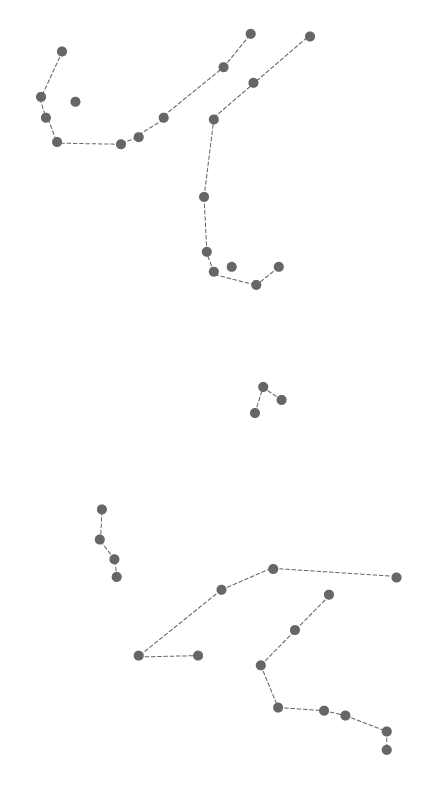
The Wei Constellation, featuring the two lobes of the anatomical Lung as part of the celestial stomach.
(© 2015 Heiner Fruehauf)
The second celestial constellation called Tianfu is Tianshi, the Celestial Market, also known as Changcheng (Great Wall).7 Since the defining part of the character for lung (fel) can be read as market (shi). and the lung system literally is “the organ system that acts like a market” (by distributing the materials for postnatal sustenance), Tianshi could also be called The Celestial Lung. It is no coincidence that in the Wei (Stomach) Constellation associated with Zhongfu LU-1, which also features a clear image of the lung in the sky, the celestial context presents the lung as part of the stomach.
Here, in contrast, lung metal is portrayed as the ruling element in both the Celestial Market and the Celestial Court.This situation is paralleled in the acupoint dynamics of the body, where Zhongfu LU-1 represents metal within the womb of earth, while Tianfu LU-3 embodies the matured metal as a solar singularity.
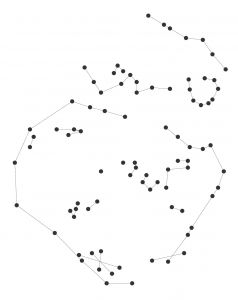
The Tianshi Constellation
(© 2015 Heiner Fruehauf)
Most notably, the Tianshi Constellation is comprised of twenty-two stars; eleven stars on each side form two half circles around a central courtyard — just as the eleven lung the centre. At the heart of the configuration resides the single star Imperial Seat (dizuo), known as “the external divan of the Heavenly Emperor,”8 accompanied by several ministers of state and the formations Ancestral Man (zongren) and Ancestral Righteousness (zongzheng). Each of the stars in the surrounding circle is named after a state of pre-dynastic China. Together, they comprise a picture of the “realm below heaven” (tianxia), a term used by the ancient Chinese to describe the life-on-earth dimension of the world. The entire configuration is said to “represent the power of authority that is in charge of weighing things [as in a courtroom or a market] and of gathering a crowd … it is in charge of matters involving the death sentence carried out by beheading or stabbing.”9 All of these attributes — authority, judgement, and killing — are clear markers of the metal element.
The design of the Celestial Market not only reflects the political reality of pre-dynastic China, but also casts an exacting light on the nature of the gubernatorial position of the lung in relationship to the other networks of the body. While each organ-country occupies its own territory and exhibits its own cultural spirit, they all unite under a common dynastic flag. Especially during the formative period of Neijing concepts set in the latter part of the Zhou Dynasty (740-221 B.C.E.), the phenomenon of dynastic rule had primarily ceremonial implications. Through the Tianfu Office discussed below, the imperial court was in charge of maintaining the ritual bond with the ancestral, legitimacy bestowing lineage of the dynasty, as well as representing the designated channel of heavenly truth (Dao) and the earthly manifestation of heavenly virtue (De).
Once again, therefore, the taiyin dialectic of the inversion of heavenly and earthly positions reveals itself. In the course of the entire spleen channel that features the gestational phase of the metal element, the taiyin endeavour is portrayed as a humble, earth-like service to the yet invisible high court of metal rule. Once this process reaches the point where the emperor has actually matured enough to “come out,” “hold court,” and flaunt his ceremonial power, the metal sky element must immediately humble itself to a position of service that reaches from the top down. This means, specifically, that the exemplary ruler must embody the awareness that the imperial lineage is not a personal accomplishment, but a gift of Heaven. He realises that aristocratic sovereignty is like a talent – not meant for celebration of the august ruler’s self, but for display and distribution for the benefit of all subjects. The righteous emperor thus requests ancestral support to benefit all; he channels heavenly messages to benefit all; and he transforms his centre of government into a market rather than a hoarding place for valuable tributary items, again to benefit all.
EARTH
On a terrestrial level, the term Tianfu early on represented the concept of “heaven on earth.” It conjures up images of an ancient Shangrila, a central paradise surrounded by beautiful sites in all four directions. Bountifully endowed by heaven, Tianfu (Place Blessed With Heavenly Endowment) is typically described as ” the land where fertile earth, arable land, prosperous people and exquisite chariots abound.”10. Apart from its mythical connotations, Tianfu was specifically associated with the ancient country of Shu, now part of Sichuan Province. Up to the present day, Sichuan is known as the greenhouse of China, a place where vegetables, grains and herbs flourish in great abundance and variety. This highly fertile milieu is brought about by the presence of clouds and rain generated by the nearby mountains of the Tibetan Plateau. These mountains, technically the Eastern foothills of the Himalayans, also issue an abundance of fresh water that can be dammed and used for irrigation. One source actually states that Tianfu owes its paradise status to the grand irrigation project at Dujiangyan, built more than 2,000 years ago to provide a steady supply of water to the entire Sichuan valley, and then as now hailed as one of the greatest engineering feats of the ancient world.
Where water brings fecundity and splendour, it also brings the potential for the development of water born diseases. If the summers are too hot, for instance, damp heat will arise in the atmosphere and invite the presence of pathogens that flourish in these conditions. Mosquitoes that transmit malaria or microorganisms that cause epidemic diseases such as encephalitis or meningitis will thrive. Since the Sichuan valley is surrounded by mountains, it is generally shielded from negative influences. In case, however, that roaming brigands or pathogens breach its protective walls, it becomes an arduous task to expel them. In other words, the fertile Sichuan basin can be compared to a treasure chamber attracting thieves who, once inside, could easily become trapped. This scenario then becomes a picture of shaoyang (gallbladder and triple warmer) pathology on a terrest:rial plane: stagnant, festering waterways that foster fierce eruptions of localised heat, as well as virulent pathogens that become trapped inside and affect the lung, but cannot be expelled by regular surface treatments. As we will see in the pathology section, this is the precise pathological scenario for which the point Tianfu is intended to be used.
HUMAN BEINGS
Tianfu is recorded as one of the 360 court officials in the Zhou Li. The term refers to both a place and a function, namely the treasury of the ancestral temple at the royal court, and the office of the custodians who guard the temple. It is a place, similar to other offices named fu, where valuable items are stored and administrated. Tianfu, how ever, is a place of particular importance. Thirty-one stewards used to work here, including four executive officials bearing the title of Fu Officer. In comparison, other fu offices feature only one Fu Officer. Tianfu, in this context, can be rendered as the Store House of Heavenly Substances, con taining objects that are from Heaven, are like Heaven, and are used to connect to Heaven, i.e.ceremonial objects made from metal and jade.
Tianfu is listed as the 9th official in the Ministry of Rites (literally Spring Ministry, chunguan). Nine is the square of three, i.e. the number of the human condition — Heaven (One), Earth (Two), and Human Beings (Three). Three reflects the state of being an offspring of Heaven and Earth, as well as the human mandate to maintain a connection to our heavenly and earthly parents. The number nine, moreover, is repeatedly used in the Neijing to label functional processes that belong to the heart, which “is the ruler and the lord of the organ networks.”11 The Tianfu Office, and by extension the Tianfu point LU-3, are thus endowed with a clear dose of imperial esprit. As already stated in the Heaven section, the role of the emperor in pre-dynastic China was clearly deemed as “the channel of heavenly light.”12 As the Son of Heaven (tianzi), he represented humankind’s ancestral connection to the realm above and was in charge of renewing the celestial mandate of the dynasty by performing regular sacrifices to the ancestral spirits. It is therefore no surprise that Tianfu, on both the celestial and societal layers, renders an image of the ancestral temple at the royal court.
Several of the traditional commentaries to the Zhou Li point out that the Ancestral Temple (zumiao) specifically refers to the most important of seven temples belonging to the king, namely the sanctum of the dynasty’s progenitor.13 During the Zhou, this temple was specifically dedicated to the founder of the Zhou Dynasty, Hou Ji. Considering the context of taiyin dynamics, it is most important to note that both characters in Hou Ji’s name bear a strong affinity to earth and grain. Hou Ji’s status as originator of the Zhou, moreover, is said to have been preceded by his service as the Minister of Agriculture to the legendary emperor Shun. In addition, the Shuowen Jiezi defines the full designation for ancestor — shizu — as “ancestral line that began with a woman.”14 The Ancestral Temple, therefore, is a Heavenly Treasury with taiyin attributes-filled with luminous objects that facilitate the connection to a male ancestor in Heaven, who is really the swarthy Earth Mother in heavenly guise. Taiyin Spleen Earth thus becomes once again corroborated in its role of Heaven-as-Earth (Hexagram 1, Qian), while Taiyin Lung Metal exemplifies the situation of Earth-in-Heaven (Hexagram 11, Tai).

Hexagram 1 (Qian)

Hexagram 11 (Tai)
The Ministry of Rites is dedicated to a wide range of ritual duties, involving ceremonial offerings to the Heavenly Spirits (tianshen), the Human Ghosts (rengui), and the Earthly Souls (didi).15 The Tianfu officials are specifically devoted to the task of guarding and maintaining the sanctum of the dynastic ancestor, who is presented as a synthesis of heavenly and earthly forces.The Tianfu office, as part of the story encoded in Tianfu LU-3, thus sheds an exacting light on the Chinese medicine concept of ancestral qi (zongqi). It illuminates ancestral qi as the final stage of the fusion of earth and metal – where common postnatal wine is upgraded to the noble, champagne-like elixir of life (by adding the sparkle of air qi to a base of grain qi); where male and female aspects integrate into the productive union of Three; where the servant/ruler taiji gives birth to the consciousness of unity, in which every aspect of the system is part of something greater than itself; and finally, where taiyin 太 becomes dayin 大 (Great Yin) as well as tianyin 天 (Heavenly Yin), exuding moral authority, righteousness and the promise of a sustained flow of life-bringing essences.
The Tianfu Treasury contains the country’s most valuable collection of material objects. Most of them are royal heir looms that were handed down – “gifted” – by previous representatives of the dynastic lineage.16 One of the temple superintendent’s most important tasks, therefore, is to”guard against intruders.”17 The record states, moreover, that “after (the Tianfu official) displays the objects, he immediately stows them away again.”18 The Ancestral Temple, after all, is the inner sanctum of the royal court,which in turn represents the inner sanctum of the state.lf its gates are breached and its contents pillaged, the effect can be compared to heat influences scorching and polluting the fresh water reservoir of its terrestrial namesake, the fertile Sichuan basin – it is an event that means certain ruin for the system as a whole.
Despite this inwardly oriented storage element, the Tianfu Office principally distinguishes itself through its outward momentum. Tianfu can be translated as Exteriorizing Treasury, or Office for the External Display of Stored Items, in contrast to Zhongfu, the lnternalising Treasury, or Office for the Internal Safekeeping of Stored Items. Tianfu is a cache of ceremonial items, which by their very nature are designed for ostentation. The pomp and circumstance of a ritual transaction, of course, is fundamentally different from the habitual presentation of everyday life materials such as food on a market. The ceremonies that involve objects stored in the Ancestral Temple are limited to important sacrifices, divinations and burials, and always encompass the ritual affirmation of the ancestral lineage and, consequently, the legitimacy of life under the auspices of the dynasty. The more valuable objects the displayed, the more this affirmation becomes imbued with dignity, magnificence and vigour. The contents of Tianfu thus have the role of the country’s jewellery. Like crown jewels, the treasury’s tripods, metal vessels and jade discs were kept safely inside for most of the year, but emerged for glamorous bravura at seasonable occasions.
Appropriately, the Tianfu Official is not only in charge of the most pivotal level of the functions of “guarding” and “displaying,” but also of ” traveling alongside the king with core items of the treasury during official outings.”19 If we revisit the stellar constellations labelled Tianfu, we can see that this extroverted quality of the Tianfu Office is paralleled by both of its celestial counterparts. Tianshi, the Heavenly Market, is an image of the king holding court on his “external divan,” attending to matters that effect the outside of the palatial sphere. Gang, the Neck of the Dragon, represents the dynamic potential of line two of Hexagram 1, namely the neck of the outgoing dragon emerging above the horizon in springtime.20
The interplay of inside and outside dynamics on the Tianfu stage demonstrates once again the integrative power of the number Three. Three is the harmonious union of the polarised aspects of yin and yang, resolving the state of separation between opposites such as inside and outside, female and male, and servant and ruler. At Tianfu, the inside is inside so that it can be outside, and the outside is outside so that it can be inside again. This relationship-centred approach is also applied to the domain of time and the dichotomy of past and future.The concept of the temple implies the veneration of an ancestor who lived in the distant past.The process of connecting backward, however, is entirely motivated by the purpose of benefiting the future of the present system. As stated in the Zhou Li, the Tianfu Official “carries out divinations regarding the coming year during the first month of spring.”21 This statement clarifies why Tianfu is classified as a member of the Spring Ministry – because he embodies the forward-looking momentum of spring.
The theme of union in relationship isfurther developed in the statement that the Tianfu office is also “in charge of storing treatises of allied countries, as well as records of courtcases.”22 Finally, the office is said to “receive and store official figures from the efforts of census taking and harvest calculations.”23 Tianfu, in essence, marks the ritual function of bringing (earthly) separation to the state of (heavenly) oneness again, and of imbuing earthly reality with the mandate of heavenly truth.
LOCATION: NOSE DEPOT
In Laozi’s Dao De Jing and other classics, the term Tianmen (sky gate) appears as a Daoist designation for the nose. The nose is the orifice of the lung, the body’s sky organ, and it is through the nostrils that the lung absorbs and connects to heavenly qi. Most acupuncture classics involve the nose in locating Tianfu LU-3, namely by “landing the tip of the nose on the outstretched arm, and where the nose meets the arm, that is the point.”24 This manoeuvre will bring the tip of the nose (Tianmen) and the point (Tianfu) on the same level, and the indentation at LU-3 then naturally becomes a “depot” (fu) for the lung orifice. It will also bring the nose on an even footing with Yunmen LU-2, which on a terrestrial layer is associated with the image of mountain caves serving as nostrils of the earth lung. A nose-gate/nose-depot pair can even be found in the sky, where two nostril like stars called Tianmen are immediate neighbours of the Tianfu/Gang Constellation.
PHYSIOLOGY: CUSTODIAN OF THE ANCESTRAL TEMPLE
The information transmitted via the multidimensional symbolism of the term Tianfu is obviously prolific, projecting a complex picture of the functional essence of the point LU-3. Most junctions in the web of references, however, point to the lung’s role of being the custodian of ancestral qi (zongqi) — specifically the functions of containing it, guarding it, displaying it, and promising to distribute it in timely intervals. Tianfu is thus revealed as the point where the ritual attributes of the metal element are at home: the splendour of authority that by design asserts itself humbly, i.e. via the virtues of dignity, respect and integrity.
Tianfu is the site where the taiyin commodity gained from the integration of the “gifts” from mother earth (guqi) and father sky (daqi) is stored and administrated. It is the place where taiyin essence takes shape as a material reality, ready to provide the body’s “subjects” with sustenance. Tianfu, as the treasury of useable postnatal qi, thus mirrors the function of its macrocosmic counterparts. It represents the propagating force that nurses the 10,000 things, like the Dragon and the Market in the sky. It designates the reservoir of fertilising essence, like the Dujiangyan irrigation project above the Sichuan basin on earth; and it exemplifies the power of authority sanctioned by the ancestral lineage, like the Ministry of Rite’s Tianfu Official in the human sphere. Altogether, Tianfu signals the potential and the palpable promise of the presence of taiyin essence. At Tianfu LU-3, this essence is not yet circulated, but is assembled in its ultimate form and stands ready for its journey of downward distribution.
In a physiological state, the strength and glamour of this “endowment” is supposed to be expressed only sparingly. As long as the Ancestral Temple is filled with treasures that were reaped from the earth and distilled under the influence of sky breath, the ruling house remains imbued with an inner sense of strength, certainty, and mandate. Permanent display of these treasures, however, would tarnish the lustre of this poise. Tianfu commands the power of authority that valuable jewels produce for their proprietor as well as the eyes of their beholder. Tianfu thus embodies the empowering principle of the aristocracy – legitimised through ancestry and documented by the possession of valuable heirlooms. The crown jewels, for instance, are material insignia of ascendancy. As such, they are kept safely under lock and key, to be displayed only during stately occasions.
Tianfu, finally, incorporates the “metal judge” aspect of the lung, which includes the imperial sense of purpose, dignity and self-respect. The fact that this point exhibits a close affinity to the sense organs – especially the higher sense of sight — only reinforces the inner yearning for authenticity that surfaces at this site, and that can only thrive in the environment of a pure, unpolluted lung.
PATHOLOGY: FIRE CONGESTION
Despite the wealth of functional information associated with this point and the distinction of being designated as one of the five Windows of Heaven points in the Neijing,25 modern practitioners rarely work with Tianfu LU-3 in a clinical environment. The most important reason for this situation is, once again, the forward oriented concept of knowledge that values the technical facts of modern science more than the age-old mythological data stream of symbolic reference. Most modern acupuncture textbooks reflect this state of affairs by limiting their description of Tianfu LU-3 indications to “coughing and localised pain on the inner side of the upper arm.”26 In other words, the rich functional symbolism of the ancestral court has given way to the structural viewpoint that Tianfu LU-3can be used for ashixie (local pain) manipulation and, just like any other point on the lung channel, respiratory distress. Since all points on the lung channel are said to treat symptoms of coughing, modern practitioners generally prefer the more easily accessible and better known “five element points” (wu shuxie) on the lower part of the arm, especially Chize LU-5, Lieque LU-7 and Taiyuan LU-9.
This custom of utilising only a few prominent points on each channel has become one of the simplistic conventions of TCM acupuncture. However, just like classical herbology, traditional acupuncture science was once clearly committed to address both the general as well as the concrete aspects of a client’s symptom picture. The diagnosis of “lung pathology,” therefore, must go beyond the therapeutic ballpark lung treatment — and define the intricate nuances of the therapeutic approach. Otherwise, the clinical process be comes unable to reflect the richness and complexity, and thus the scientific character, of traditional acupuncture.
The discipline of classical acupuncture, in other words, did not suggest approaching all possible scenarios of com promised lung function, such as cough, asthma, low immune function, sensitivity to extreme temperatures, claustrophobia, sadness, feelings of separateness and unworthiness, spiritual impurity, cynicism, vanity, etc., by recommending only a limited selection of points. Rather, through symbolist methodology, classical acupuncture indicates with great specificity which point is best suited to treat which aspect of lung pathology.
The specific indications for the point Tianfu LU-3 appear to be very clearly described. From the perspective of the point’s physiology, which has been discussed above, the primary indication for its therapeutic regulation is an invasion of the”ancestral court” and the ensuing compromise of its various functions. This invasion is further specified as shaoyang (triple warmer) or shaoyin (heart) fire assaulting lung metal. The Neijing features Tianfu LU-3 prominently in chapter seventy-four, where it is stated that the pulse taken at this position becomes the main indicator for a life threatening pathology of the lung caused by an invasion of epidemic shaoyang and shaoyin pathogens:
When shaoyang commands Heaven, fire pathogens are exuberant and epidemic diseases will arise. As a result, the administrative authority of the metal element will be com promised. Consequently, the people typically suffer from headaches accompanied by fever, chills, and malaria at tacks; or from heat surges accompanied by painful skin, with the skin changing colour to yellow and red and finally turning into water filled pustules; or from swelling and oedema of the body surface; or from abdominal bloating with breathing difficulties; or from diarrhoea with traces of blood and pus; or from carbuncles; or from coughing of blood; or from restlessness in the heart and a heat sensation in the chest. If this type of pathology is severe, there will be bleeding from the nose. The root of this disease is in the lung. If the pulse at Tianfu [LU-3] disappears, the patient will die and should not be treated.27
When shaoyin [fire] takes revenge [on metal], there will be symptoms of internal heat, restlessness, carbuncles, sneezing and abdominal cramps … When this disease is more severe, it will enter the lung, and there will be signs of coughing and sinus infections.If the pulse at Tianfu (LU-3) disappears. the patient will die and should not be treated.28
This rather specific aetiology of the point Tianfu LU-3 is written into the characters that make up its name. Accord ing to Chinese symbolist convention, tian (Heaven) includes the characteristics of yang (yang), huo (fire) and re (heat). The qualities of fire and heat, in turn, are associated with shaoyang and shaoyin in the Six Confirmation system of Chinese medicine. The term fu refers to a container that “functions like Heaven and therefore moves things through without retaining them.”29 In the context of pathology, then, Tianfu can be translated as Storage House of Trapped Heat, or Fire Congestion.
This scenario is confirmed by the pathological potential of the macrocosmic counterparts of the acupuncture point Tianfu LU-3. The Tianfu region on earth, namely the fertile but isolated Sichuan basin, has long been known for its predisposition for damp heat epidemics that flourish during the times of spring (shaoyang) or summer (shaoyin). In addition, the Zhou Li classifies the royal court official Tianfu as an officer of the Ministry of Rites (chw1guan), which literally translates as “Ministry of Spring.”
The celestial Tianfu constellation, moreover, illuminates the specifics of a potential fire invasion into the metal court in even greater detail. The Tianfu stars were traditionally associated with the spread of “epidemic disease,”30 which, from a Chinese medicine perspective, most often involves the process of fire pathogens entering the lung. The four stars at the centre of this celestial court are described as being protected by stellar guardians who specifically safeguard the Yang Gate (yangmen). This star gate is located below the court, indicating that potential invaders typically enter into the inner metal sanctum from the fire direction below.
As mentioned earlier, the Tianfu cluster was also called Kang (The Neck). referring to the neck of the Blue-Green Dragon constellation over China’s Eastern sky. Naturally, this constellation has an affinity to the human throat, which, in turn, is traditionally associated with the lung. Chinese medicine describes the throat/ neck as one of the body’s yang gates. a narrow conduit through which all yang channels must pass,and where fire pathogens tend to symptomatically manifest themselves. If fire pathogens attack the lung and push upwards through this crucial gate, they will literally go to the head. Epidemic fevers, indeed, tend to affect the sensory orifices and obscure consciousness.
The symbolism of Tianfu LU-3 thus goes far beyond the indication of metal pathology, or even the more specific pathology of fire invading metal. It is extremely precise in nature, by highlighting Tianfu LU-3 for the treatment of a compromised lung that is under attack by fire and specifically manifests its distress in the form of excess heat symptoms in the throat, the orifices in the head, and the mental faculties. Pre-modern texts provide evidence that the symbolist tradition of classical acupuncture was at least partially intact until the beginning of this century. The early 17th century medical compendium Zhenjiu Dacheng (The Encyclopaedia of Acupuncture and Moxibustion), often remembered as the most complete collection of ancient acumoxa knowledge, presents the indications of Tianfu LU-3 in four categories, all of which corroborate the “mythological” data outlined above: (i) Lung pathology (“asthmatic breathing”); (ii) fire invading metal (“tuberculosis, sudden localised arm pain in the vicinity of Tianfu LU-3”); (iii) shaoyang symptoms (“malaria with symptoms of alternating chills and fever, blurry eyesight, obscured vision of distant objects, and swollen lymph nodes in the neck”); (iv) excess fire affecting the head, causing distress in the orifices (“bleeding from the nose or mouth”) and mental faculties (“absentmindedness, talking as if pos sessed, crying and weeping”).31
Heiner Fruehauf has researched topics related to East Asian civilisation and Chinese medicine for 22 years. He has studied at the Universities of Tubingen, Fudan, Hamburg, Chicago and Waseda, and holds a Ph.D. from the Dept. of East Asian Languages and Civilisation at the University of Chicago and a post-doctoral certificate from Chengdu University of TCM. During a five year sojourn in China, he studied Chinese medicine both within the institutionalised TCM model, as well as the traditional lineage system that continues to function outside PRC government schools. He has published widely in the fields of Chinese and Japanese culture, with a specific focus on the traditional aspects of Chinese medicine.Presently he directs the College of Classical Chinese Medicine at the National University of Natural Medicine in Portland, Oregon, and leads study tours on classical Chinese medicine and qigong into the mountains of Western China.
Notes:
- “The Heart is the ruler and the lord of the organ networks; out of it comes the light of spirit The lung is the prime minister of the organ networks; out of It comes regulation and flow.” See chapter 8 of the Neijing Suwen, in Huangdi Neijing Suwen Yi Shi (The Neijing Suwen: Text, Translation, and Annotation), (Shanghai: Shanghai Kexue Jishu Chubanshe, 1991), p. 69-70.
- The Chinese word “crisp and shiny” (congming) refers to the phenomenon of natural intelligence as expressed by the acuity of the ears and eyes.
- See Sun Xiaochun and Jacob Kistemaker, The Chinese Sky During the Han: Constellating the Stars and Society (Leiden: Brill, 1997), p. 157.
- See the Tianguan Shu (Astronomy Section) chapter of the Shiji, quoted ibid., p. 55.
- See Gan Shi Xin Jing (Master Gan’s Star Classic), quoted ibid.
- See Shiji Tianguan Shu, quoted ibid.
- See Sun and Kistemaker, p. 148.
- See Song Shi (A History of the Song Dynasty), quoted ibid., p. 51.
- See Jin Shu (Annals of the Jin Dynasty), quoted ibid.
- See Zhanguo Ce (A Record of the Warring States). quoted ibid. p. l64.
- See chapter 8 of the Neijing Suwen, in Huangdi Neijing Suwen, Yisili, p. 69.
- Ibid
- See Ruan Yuan, Zhou Li Zhu Shu (An Annotation and Interpretation of the Rites of the Zhou Dynasty), in Shisan Ling Zhu Shu (Annotations and Interpretations of the Thirteen Classics). 2 vols. (Shanghai: Zhonghua Shuju, 1979), vol. l, p. 776.
- See Shuowen Jiezi Zhu, p. 617.
- See the Zhou Li entry on the Minister of Rites (dazongbo), in Zhou Li Zhu Shu, p.757.
- Ibid., p.776.
- Ibid.
- Ibid.
- Ibid.
- See Edward Shaughnessy’s excellent article. “The Composition of ‘Qian’ and ‘Kun’ Hexagrams of the Zhouli” in Edward L. Shaughnessy, Before Confucious (Albany:State University of New York Press, !997), p. 201.
- See Zhou Li Zhu Shu, p.776.
- Ibid.
- Ibid.
- “If you place Ink on your nose and touch the arm. the ink will mark the point.” See Yang Jizhou’s Ming dynasty classic. Zhenjiu Dacheng (The Encyclopedia of Acupuncture and Moxibustion), in Zhenjiu Dacheng Jiao Shi (An Annotated and Explicated Edition of the Encyclopedia of Acupuncture and Moxibustion), (Beijing: Renmin Weisheng Chubanshe. 1991), p. 716; see also earlier classics, such as Yixue Yuanslli (The Origins of Medical Science).quoted in Zhong Guo Da Cidian (The Great Dictionary of Chinese Acupuncture and Moxibustion), (Beijing: Beijing Tiyuxueyuan Chubanshe, 1988). p.181.
- For the best. description of Tianfu pathology in a Western language, see Peter Deadman and Mazin AI-Kafaji, A Manual of Acupuncture (Hove: Journal of Chinese Medicine Publications. 1998). p. 78-79. For an introduction to the Window of Heaven points, see ibid. p. 48-49.
- See Ge Shiying, Hu Lian, and Jin Wancheng, eds. Zhen Jiu Xiewei Guatu Shuoming. (A Wall Chart Explanation of Acupuncture and Moxibustion Points), (Beijing: Renmin Weisheng Chubanshe, 1993). p. l.
- See Huangdi Neijing Suwen Yishi. p.627.
- See ibid.. p.634.
- See the famous chapter II of the Neijing that provides the definitive differentiation of zang organs and fu organs, in ibid., p.93.
- See Shiju Tianguan Shu. quoted in Zhongguo Mudai Mingwu Dadian. vol. l. p.55.
- “Tianfu is indicated for intense localised arm pain, bleeding from the nose or mouth, invasion by wind pathogens, crying and weeping, absentmindedness, tuberculosis. talking as if possessed, asthmatic breathing. malaria with symptoms of alternating chills and fever, blurry eyesight, obscured vision of distant objects, and swollen lymph nodes.” See Zhenjiu Dacheng Jiao Shi. p. 716.
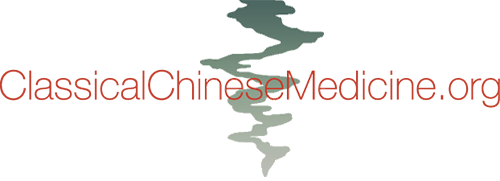

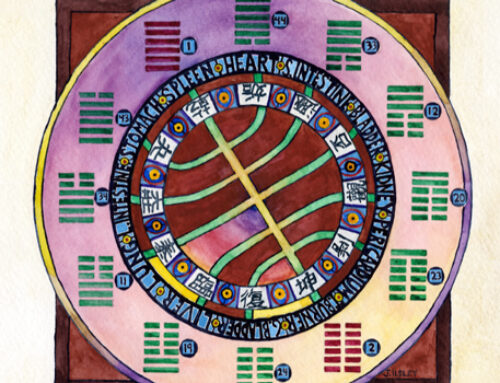

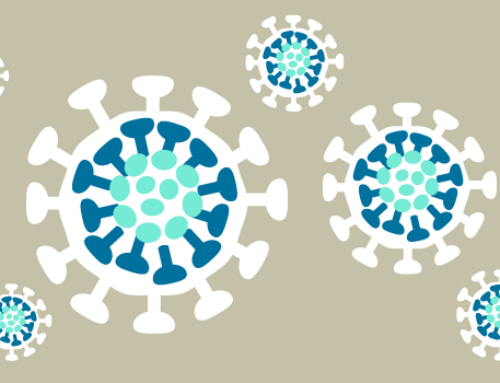
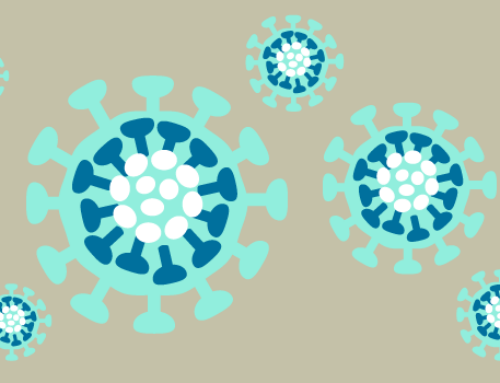

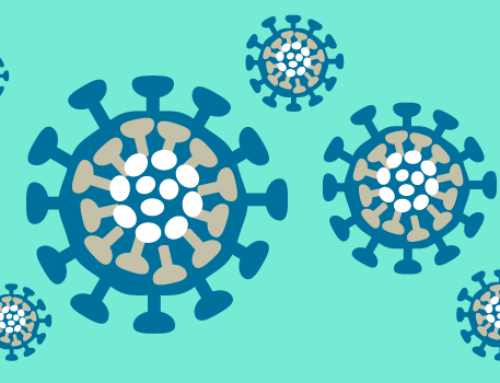

Leave A Comment
You must be logged in to post a comment.